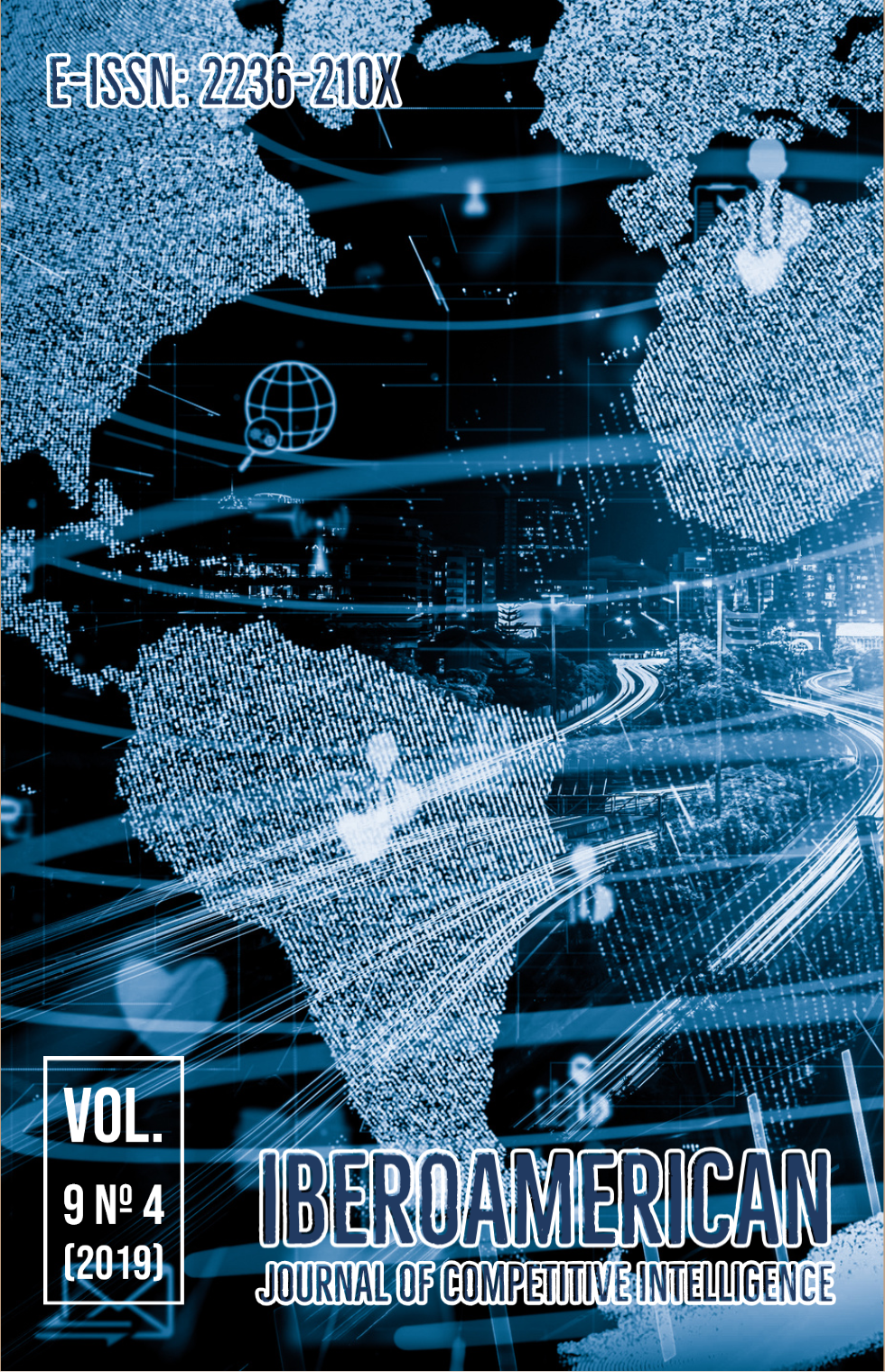Abstract
O objetivo do presente trabalho é discutir de que maneira a gestão de pessoas pode ser utilizada como uma ferramenta inovadora pelas empresas no cenário da síndrome de burnout. Esta síndrome se caracteriza pelo adoecimento físico e mental do trabalhador, o que acarreta muitas vezes o absenteísmo, baixa produtividade e clima organizacional doente, pois a quebra de vínculos e baixo desempenho fazem parte deste processo. Assim, pensar em formas de minimizar o sofrimento no contexto do trabalho torna-se uma tarefa importante para as empresas na promoção de saúde e também de responsabilidade quanto ao contexto geral da sua relação com a sociedade. Trata-se de um artigo de revisão de literatura com base na psicologia e teoria geral da administração. Com base nesta reflexão esperamos construir alguns parâmetros em estratégias de gestão de pessoas capazes de minimizar o impacto da síndrome de burnout em trabalhadores dos mais variados tipos de organizações.
References
Arches, J. (1991). Social Structure, Burnout, and Job Satisfaction. Social Work, 36, 202-206.
Arthur, M. B., & Rousseau, D. M. (1996). Introduction: the boundaryless career as a new employment principle. In M. B. Arthur & D. M. Rousseau (Eds.), The boundaryless career: a new employment principle for a new organizational era (pp. 3-20). New York: Oxford University Press.
Barbosa, Rosa Maria de S. Albuquerque & Guimarães, Tomás de Aquino.(2005). Síndrome de Burnout: Relações com comprometimento afetivo entre gestores de organização estatal. Revista de administração Mackenzie; Ano 6, n.1, p. 157-179, janeiro.
Bryne, B. M. (1993). The Maslach Burnout Inventory: Testing factorial validity and invariance across elementar, intermediate and secondary teachers. Journal of Occupational and Organizational Psychology, 66, 3, p. 197-213.
Carlotto, Mary Sandra & Gobbi, Maria Dolores.(1999) Síndrome de Burnout: um problema do indivíduo ou do seu contexto de trabalho? p.103-114; Julho/dezembro.
Cherniss, C. Professional burnout in human servisse organizations.(1992). New York: Praeger, 1980. Long-term consequences of burnout: An exploratory study. Journal of Organizational Behavior, 13, p. 111.
CHIAVENATO, I.(2014). Gestão de Pessoas: o novo papel dos recursos humanos nas organizações. Barueri: Manole.
Clark, P & Staunton, N. (1989). Innovation in technology and organization. Routledge.
Codo, Wanderley & Menezes, Iône Vasques.(2000). O que é Burnout? Capitulo 13, Educação: carinho e trabalho; Burnout, a síndrome da desistência do educador, que pode levar a falência da educação; 2ª edição; Edidotira Vozes.
Kaufman, B. E. (2008). Managing the human factor: the early years of human resource management in american industry. Ithaca - NY: Cornell University Press.
Loiola, E.; Bastos, A. V.B.; Teixeira, J. C. de A. (2003). A adoção de práticas inovadoras de organização e produção no Brasil. In: Simpósio de engenharia de produção – SIMPEP, 10., 2003, Bauru. Anais… Bauru: FEB – UNESP.
Maslach, C.; Leiter, M.P. (1997) Trabalho: fonte de prazer ou desgaste. Papirus, Campinas.
Moreira, D. A. et al. (2016). Estratégias de organização e fortalecimento do trabalho da enfermagem na equipe de saúde da família. R. Enferm. Cent. O. Min., v. 1, n. 6, p. 2106-2118.
Perlman, B. & Hartman, A. E. (1982). Burnout: sumary and future research. Human Relations, [S.l.], p. 283-305.
Rodrigues, L. Pereira, S. & Borges, J. (2001). Gestão de pessoas e o enfoque nos papéis profissionais: um estudo de caso com os bibliotecários de uma universidade pública federal brasileira.Conocimiento, innovación y empreendedores: caminho al futuro.
Silveira, V.& Miranda, D.(2011) Gestão Estratégica de Pessoas E Desempenho Organizacional: Uma Análise Teórica De Suas Relações E Configurações.EANPAD, Rio de Janeiro.
Schaufelli, W. & Bunk, B.P. (1996). Profesional burnout in M. Handbook of work and health psychology (p.311-346). New York, John Wiley and sons.
Tamayo Mauricio Robayo & Tróccoli, Bartholomeu Tôrres. (2002). Exaustão emocional: relações com a percepção de suporte organizacional e com as estratégias de coping no trabalho. Universidade de Brasília – Estudos de Psico.
Weick, K. E. (1996). Enactment and the boundaryless career: organizing as we work. In M. B. Arthur & D. M. Rousseau (Eds.), The boundaryless career: a new employment principle for a new organizational era (pp. 40-57). New York: Oxford University Press.
Authors who publish with this journal agree to the following terms:
1. Authors who publish in this journal agree to the following terms: the author(s) authorize(s) the publication of the text in the journal;
2. The author(s) ensure(s) that the contribution is original and unpublished and that it is not in the process of evaluation by another journal;
3. The journal is not responsible for the views, ideas and concepts presented in articles, and these are the sole responsibility of the author(s);
4. The publishers reserve the right to make textual adjustments and adapt texts to meet with publication standards.
5. Authors retain copyright and grant the journal the right to first publication, with the work simultaneously licensed under the Creative Commons Atribuição NãoComercial 4.0 internacional, which allows the work to be shared with recognized authorship and initial publication in this journal.
6. Authors are allowed to assume additional contracts separately, for non-exclusive distribution of the version of the work published in this journal (e.g. publish in institutional repository or as a book chapter), with recognition of authorship and initial publication in this journal.
7. Authors are allowed and are encouraged to publish and distribute their work online (e.g. in institutional repositories or on a personal web page) at any point before or during the editorial process, as this can generate positive effects, as well as increase the impact and citations of the published work (see the effect of Free Access) at http://opcit.eprints.org/oacitation-biblio.html
• 8. Authors are able to use ORCID is a system of identification for authors. An ORCID identifier is unique to an individual and acts as a persistent digital identifier to ensure that authors (particularly those with relatively common names) can be distinguished and their work properly attributed.





